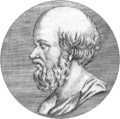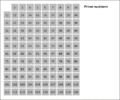Eratosthenes facts for kids
Quick facts for kids
Eratosthenes
|
|
|---|---|
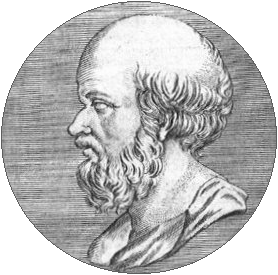
Etching of an ancient seal identified as Eratosthenes. Philipp Daniel Lippert, Dactyliothec, 1767.
|
|
| Born | 276 BC |
| Died | 194 BC (around age 82) |
| Occupation |
|
| Known for |
|
Eratosthenes of Cyrene (/ɛrəˈtɒsθəniːz/; Greek: Ἐρατοσθένης [eratostʰénɛːs]; c. 276 BC – c. 195/194 BC) was an amazing Greek scholar. He was a polymath, meaning he was good at many different subjects. These included math, geography, poetry, and astronomy.
Eratosthenes became the head librarian at the famous Library of Alexandria. This was a very important job! His work was much like what we call geography today. He even invented some of the words we still use in geography.
He is most famous for being the first person to figure out the circumference of the Earth. This is the distance all the way around our planet. He used information from his job at the Library. His measurement was incredibly close to the real size of Earth. He also calculated how much Earth's axis is tilted. This calculation was also very accurate.
Eratosthenes made the first world map that used lines for latitude and longitude. These lines helped him map the world based on what was known back then.
He also started the scientific study of chronology. This means he used old Egyptian and Persian records to guess when important historical events happened. For example, he estimated the Trojan War ended in 1183 BC. In math, he created the sieve of Eratosthenes. This is a clever way to find prime numbers.
People admired Eratosthenes for his wide knowledge. They called him Pentathlos. This was like calling him an "all-rounder" because he was skilled in so many areas. However, some critics called him Beta. This meant "second best" because they thought he was always good, but never the absolute best in any one field.
Contents
Eratosthenes' Early Life
Eratosthenes was born in 276 BC in a city called Cyrene. Today, Cyrene is part of Libya. It was founded by Greeks many centuries before Eratosthenes was born. Cyrene was a very important city.
Alexander the Great took over Cyrene in 332 BC. After Alexander died, the city was given to one of his generals, Ptolemy I Soter. Under Ptolemy's rule, Cyrene became rich. It sold horses and a special plant called Silphium, used for food and medicine.
Cyrene was a place where learning was important. Like other young Greeks, Eratosthenes went to a local gymnasium. There, he learned sports, how to talk with others, reading, writing, math, poetry, and music.
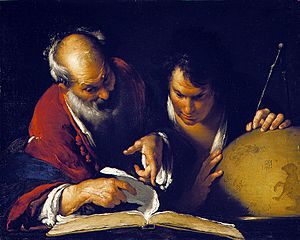
Eratosthenes later went to Athens to continue his studies. He learned about Stoicism, a type of philosophy, from its founder, Zeno of Citium. He also studied with other famous philosophers.
His interest in Plato led him to write his first scholarly book, Platonikos. This book explored the math ideas behind Plato's philosophies. Eratosthenes also loved poetry. He wrote poems like Hermes and Erigone.
He wrote Chronographies, a book that listed important dates in history. It started with the Trojan War. This book was praised for being very accurate. He also wrote Olympic Victors, which listed the winners of the Olympic Games. These works showed how talented he was.
Life at the Library of Alexandria
Because of his amazing writings and poetic skills, Pharaoh Ptolemy III Euergetes invited Eratosthenes to work at the Library of Alexandria. This happened in 245 BC. Eratosthenes was 30 years old when he moved to Alexandria. He lived there for the rest of his life.
Within about five years, he became the Chief Librarian. This was a very important position. As head of the library, Eratosthenes taught Ptolemy's children. One of his students was Ptolemy IV Philopator, who later became pharaoh.
Eratosthenes made the library's collection even bigger. In Alexandria, all books brought into the city had to be copied for the library. People said the copies were so good, you couldn't tell them apart from the originals!
He worked hard to keep the Library of Alexandria the best in the world. He even created a special section just for studying the works of Homer. He also got original plays by famous writers like Aeschylus, Sophocles, and Euripides.
Eratosthenes made many important discoveries in mathematics and science. He was also friends with the famous inventor Archimedes. Around 255 BC, Eratosthenes invented the armillary sphere. This was a model of objects in the sky.
A writer named Cleomedes said that Eratosthenes calculated the Earth's circumference around 240 BC. His measurement was very precise.
Eratosthenes believed that every nation had both good and bad people. He disagreed with Aristotle, who thought that people were divided into Greeks and "barbarians." Aristotle also thought Greeks should keep their race pure.
As Eratosthenes got older, he became blind around 195 BC. He was very sad about losing his sight. He could no longer read or observe nature. He died in 194 BC in Alexandria, at the age of 82.
Eratosthenes' Discoveries and Studies
Measuring Earth's Size
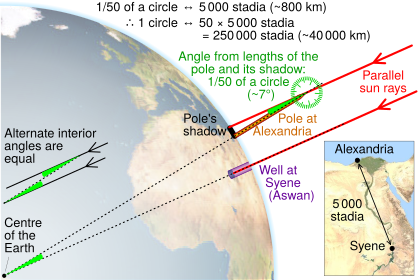
Eratosthenes' most famous achievement was measuring the Earth's circumference. He estimated it to be about 252,000 stadia. This is roughly 39,060 to 40,320 kilometres (24,270 to 25,050 mi). His calculation was very close to the actual size of Earth! It was only off by a small amount.
Eratosthenes wrote about his method in a book called On the Measure of the Earth. Sadly, this book is lost. But a simpler version of his method was saved by another writer, Cleomedes.
Here's how the simplified method worked:
- He chose two cities, Alexandria and Syene (modern Aswan). These cities were almost on the same north-south line.
- He knew that in Syene, at noon on the summer solstice, the sun's rays shone straight down into a well. This meant the sun was directly overhead.
- In Alexandria, at the same time, the sun was not directly overhead. A vertical stick (called a gnomon) would cast a shadow.
- Eratosthenes measured the angle of this shadow in Alexandria.
- He also knew the distance between Alexandria and Syene. Professional measurers called bematists had measured it.
- Using simple geometry, he figured out that the angle of the shadow in Alexandria was the same as the angle between the two cities from the Earth's center.
- By knowing this angle and the distance between the cities, he could calculate the total circumference of the Earth.
Mapping the World: Geography

Eratosthenes used his knowledge of Earth's size and shape to draw maps. At the Library of Alexandria, he had access to many travel books. These books had information and drawings of different parts of the world. Eratosthenes put all this information together in an organized way.
He wrote a three-volume work called Geography (Geographika). In this book, he described and mapped the entire world as it was known to him. He even divided Earth into five climate zones:
- Two very cold zones near the poles.
- Two mild zones.
- One hot zone around the equator.
This book was the first to use many terms we still use today, including the word "geography" itself! He drew grids of lines over the Earth's surface. He used parallels (lines of latitude) and meridians (lines of longitude) to connect every place in the world. With this system, it became possible to guess how far away different places were from each other.
His Geography showed the names and locations of over 400 cities. This had never been done before. Unfortunately, his original Geography book is lost. But we know about it from other ancient historians like Pliny, Polybius, and Strabo.
- The first part of his book was an introduction. It looked at the work of earlier geographers. Eratosthenes criticized the poet Homer for not giving accurate descriptions of places. This made some people angry because they believed Homer's world was real. Eratosthenes also thought Earth was a globe that didn't move, but its surface was always changing. He guessed that the Mediterranean Sea was once a huge lake. He thought it later connected to the ocean when a passage opened up.
- The second part of the book contained his famous calculation of the Earth's circumference. This section would now be called mathematical geography.
- His third book focused on political geography. He listed countries and used parallel lines to divide his map into sections. This helped him give accurate descriptions of different regions. This was a huge step forward and is seen as the start of geography. Because of this, Eratosthenes is often called the "Father of Modern Geography."
Other Achievements
The Suda Lexicon, an old encyclopedia, called Eratosthenes a Πένταθλος (Pentathlos). This means "All-Rounder" because he was skilled in so many things. He was truly a polymath. He was also nicknamed Beta, meaning "second best," because he was great at many things but never the absolute top in any one field.
- Eratosthenes also tried to calculate the distance to the Sun and the Moon. He estimated the distance to the Sun to be about 149,000,000 km (93,000,000 mi). This is very close to the actual distance from Earth to the Sun!
- He also calculated the Sun's diameter. He thought the Sun was about 27 times bigger than Earth. The actual figure is about 109 times bigger.
- While at the Library of Alexandria, Eratosthenes created a calendar. He figured out that a year has 365 days. He also said that every four years, there should be 366 days. This is similar to our modern leap year!
- He was proud of his solution for the problem of Doubling the Cube. This was a famous math problem. He even built a mechanical device called the mesolabio to help solve it. He gave this solution to King Ptolemy. His friend Archimedes also worked on math problems and dedicated his book The Method to Eratosthenes.
Finding Prime Numbers: The Sieve
Eratosthenes came up with a simple way to find prime numbers. This method is known as the Sieve of Eratosthenes.
In math, a "sieve" is a way to filter things out. Eratosthenes' sieve helps find all prime numbers up to a certain limit. It works by removing numbers that are not prime.
Here's the basic idea:
- You start with a list of numbers.
- You find the first prime number, which is 2.
- Then, you cross out all the multiples of 2 (4, 6, 8, etc.). These numbers cannot be prime.
- Next, you find the next number that hasn't been crossed out, which is 3. This is the next prime.
- Then, you cross out all the multiples of 3 (6, 9, 12, etc.).
- You keep doing this with each new prime number you find.
- The numbers that are left, which haven't been crossed out, are the prime numbers!
This method is very efficient for finding prime numbers.
Eratosthenes' Writings
Eratosthenes was one of the most important scholars of his time. He wrote about many different subjects. These included geography, math, philosophy, history, and even poetry. Sadly, none of his original works survived the destruction of the Library of Alexandria.
Known Titles
- Platonikos
- Hermes
- Erigone
- Chronographies
- Olympic Victors
- Περὶ τῆς ἀναμετρήσεως τῆς γῆς (On the Measurement of the Earth) (lost, but summarized by Cleomedes)
- Гεωγραϕικά (Geographika) (lost, but mentioned by Strabo)
- Arsinoe (a book about Queen Arsinoe; lost)
- Ariston (about Aristo of Chios; lost)
- The Catasterismi (Katasterismoi), a collection of Greek myths about the constellations, is often said to be by Eratosthenes.
Images for kids
-
Eratosthenes teaching in Alexandria by Bernardo Strozzi (1635)
-
Measure of Earth's circumference according to Cleomedes' simplified version, based on the approximation that Syene is on the Tropic of Cancer and on the same meridian as Alexandria
-
19th-century reconstruction of Eratosthenes' map of the (for the Greeks) known world, c. 194 BC
See also
 In Spanish: Eratóstenes para niños
In Spanish: Eratóstenes para niños
- Aristarchus of Samos (c. 310 – c. 230 BC), another Greek mathematician who calculated the distance from Earth to the Sun.
- Hipparchus (c. 190 – c. 120 BC), a Greek mathematician who measured the sizes of the Sun and Moon and their distances from Earth.
- Posidonius (c. 135 – c. 51 BC), a Greek astronomer and mathematician who also calculated the circumference of the Earth.



